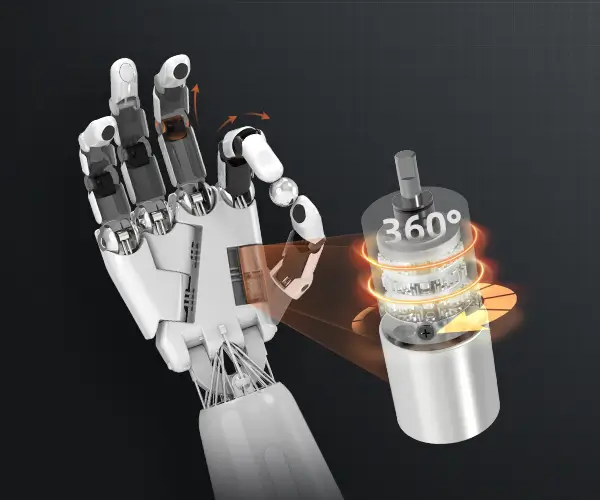In the fast-paced realm of industrial automation and mechanical engineering, the pursuit of speed, precision, and reliability never ceases. Among the technological innovations that exemplify these qualities, the "fast air motor with gearbox" stands out as a groundbreaking solution, melding pneumatic power with the mechanical finesse of gearboxes. This synergy results in a dynamic component that is revolutionizing applications across diverse sectors—from manufacturing and automation to robotics and aerospace.

To truly appreciate the significance of a fast air motor paired with a gearbox, it’s essential to understand each element's core function. An air motor, often called a pneumatic motor, converts compressed air into rotational motion. Known for their robustness, simplicity, and high power-to-weight ratios, pneumatic motors are preferred in environments where electrical motors might pose risks or face limitations, such as explosive atmospheres or moisture-rich conditions.
However, the raw power of an air motor alone isn't always sufficient for precise control and specific operational requirements. This is where gearboxes enter the scene. Gearboxes, or gear reduction units, modify the mechanical output by reducing speed and increasing torque, or vice versa, depending on application needs. By doing so, they enable fine-tuned control over motion, making it possible to achieve both high speed and high torque in a single, integrated system.
Combining a fast air motor with a gearbox unlocks a multitude of benefits that elevate industrial performance to new heights. One of the most notable advantages is the significant increase in operational speed. Traditional pneumatic systems often operate at moderate speeds, which can limit throughput and efficiency. A fast air motor, by design, accelerates the rate of rotation substantially, enabling rapid actuation and response times. When paired with a well-designed gearbox, that speed can be maintained or moderated to match precise operational demands, ensuring that machinery works swiftly without sacrificing accuracy.
Another compelling aspect is the enhancement of torque. Pneumatic motors inherently generate high torque at low speeds, but their power diminishes at higher rotational velocities. Gearboxes compensate for this by translating high rotational speeds into manageable torque levels suitable for various tasks—be it cutting, drilling, or positioning. This adaptability makes the combination ideal for end-effectors in robotic arms, conveyor systems, or precision tooling, where power and finesse must coexist seamlessly.
Durability and reliability are also pivotal qualities of these systems. Pneumatic motors are celebrated for their simplicity—fewer moving parts mean less wear and tear—and their resilience in harsh environments. Gearboxes, especially those designed with durable materials and effective lubrication, extend the lifespan of the entire setup and reduce maintenance costs. This robustness is a decisive factor in industries that operate around the clock, where downtime can be costly.
The compact design of a fast air motor with gearbox configuration offers additional advantages. In many industrial settings, space is at a premium. These combined units are often smaller and lighter than electric counterparts with similar power outputs, making them easier to install and integrate into compact machinery. Their straightforward connection and minimal wiring simplify setup, allowing for faster deployment and scaling across production lines.
Moreover, safety and environmental considerations often favor pneumatic systems. Unlike electric motors, air-powered systems do not generate sparks and are intrinsically safer in volatile environments. The use of fast air motors with gearboxes in such settings underscores their importance in ensuring operational safety without compromising on performance.
As industries continue to seek smarter, faster, and more reliable solutions, innovations in pneumatic technology are responding dynamically. Modern fast air motors with advanced gearboxes now feature better sealing techniques, precision manufacturing, and innovative materials that improve efficiency and reduce energy consumption. Some units incorporate variable speed control, enabling operators to fine-tune the system's performance dynamically, which is especially valuable in complex or delicate operations.
In addition to standalone applications, these systems are integral to larger automation architectures. For example, in robotics, quick response times and adjustable force outputs facilitate high-speed pick-and-place machines, assembly lines, and packaging operations. Similarly, in the automotive manufacturing sector, fast air motors with gearboxes enable rapid, precise welding, riveting, and component positioning—helping businesses meet demanding production quotas.
The future trajectory of fast air motors with gearboxes looks promising, driven by ongoing research and technological advancements. Materials science propels the development of lighter, more durable gearboxes, while innovations in control systems facilitate seamless integration with digital automation platforms. The advent of smart sensors embedded within these units allows real-time monitoring of performance parameters, predictive maintenance, and enhanced operational efficiency.
In sum, the fusion of high-speed pneumatic motors with resilient gearboxes is a testament to human ingenuity—melding simple, reliable power with sophisticated mechanical control to tackle the most challenging tasks in modern industry. As you explore this fascinating technology further, you'll find that whether it's accelerating production lines or enabling delicate operations, these systems are poised to be at the forefront of industrial revolution, shaping a future where speed and precision go hand in hand.
Stay tuned for the next part, where we'll delve deeper into specific applications, design considerations, and the latest innovations powering fast air motors with gearboxes.
Leveraging innovations in modular drive technology, Kpower integrates high-performance motors, precision reducers, and multi-protocol control systems to provide efficient and customized smart drive system solutions.




































